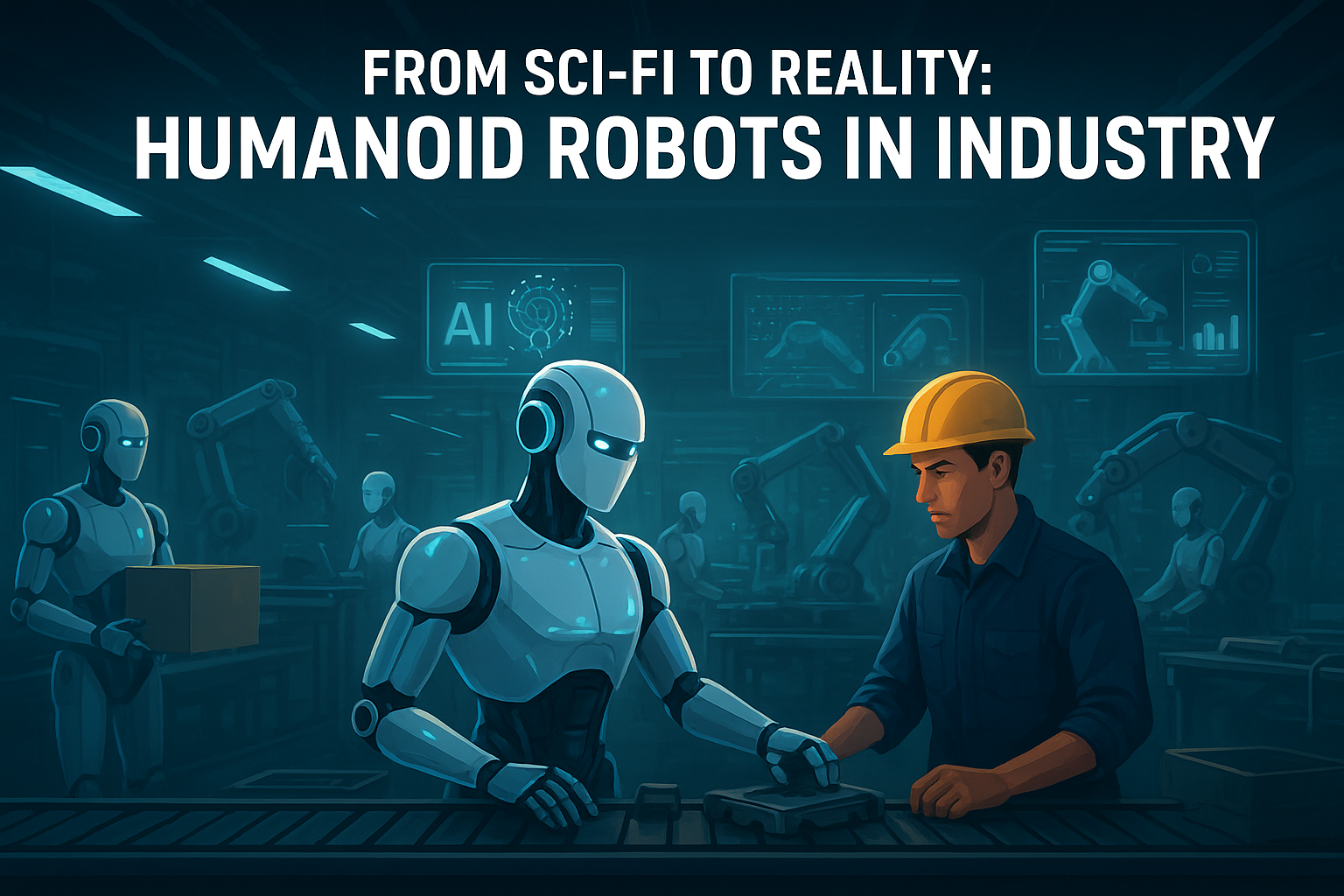Humanoid robots are not just in movies anymore. By 2025, these robots shaped like humans will start to work in actual industries such as factories and warehouses. This marks a significant advance in automation demonstrating how robots and humans can collaborate in the future.
🧑🤖 What Are Humanoid Robots?
Humanoid robots resemble humans in appearance and movement. They have the ability to:
- Walk on two legs,
- Use hands to grasp and manipulate tools,
- Function in spaces designed for humans.
Unlike traditional machines built for specific tasks humanoid robots are adaptable and can carry out various jobs.
📅 Why 2025 Is a Big Year
This year marks a shift as humanoid robots start to move from research facilities to actual work environments.
- Hyundai & Boston Dynamics run trials with humanoid robots like Atlas in automobile plants.
- Google DeepMind’s Gemini Robotics aids robots to gain knowledge about tasks in simulated worlds before carrying them out in real life.
- Nvidia & Foxconn aim to employ humanoids to assist in building AI servers in American factories by 2025.
- South Korea has even kicked off a K-Humanoid Alliance to create cutting-edge humanoid robots by 2028.
✅ Benefits of Humanoid Robots
- Safer Work – They can handle heavy loads harmful chemicals, or dangerous jobs.
- Work All Day – Robots don’t get tired and can operate around the clock.
- No Major Alterations Required – Because they move like humans, factories don’t need to overhaul everything.
- Adaptable Workers – They can change tasks such as from lifting goods to checking machines.
⚠️ Obstacles We Still Face
- High Cost – Building humanoid robots remains a pricey endeavor.
- Job Concerns – They might take over some human roles, so workers will need to learn new skills.
- Durability – They must become tougher and more dependable for extended use.
- Safety & Ethics – Guidelines are necessary to ensure safe collaboration between humans and robots.
🌍 The Future of Humanoid Robots
Humanoid robots won’t take over human jobs. Rather, they’ll take on dull, routine, or risky tasks while humans concentrate on imaginative and decisive work.
As costs decrease and tech gets better even small companies will have the chance to use humanoid robots through options like Robot-as-a-Service (RaaS).
💡 Final Thought
2025 signals the start of humanoid robots in industries. They’re shifting from test subjects to actual workers. In the years ahead, we’ll spot them in more factories, offices, and homes—transforming our way of life and work.
